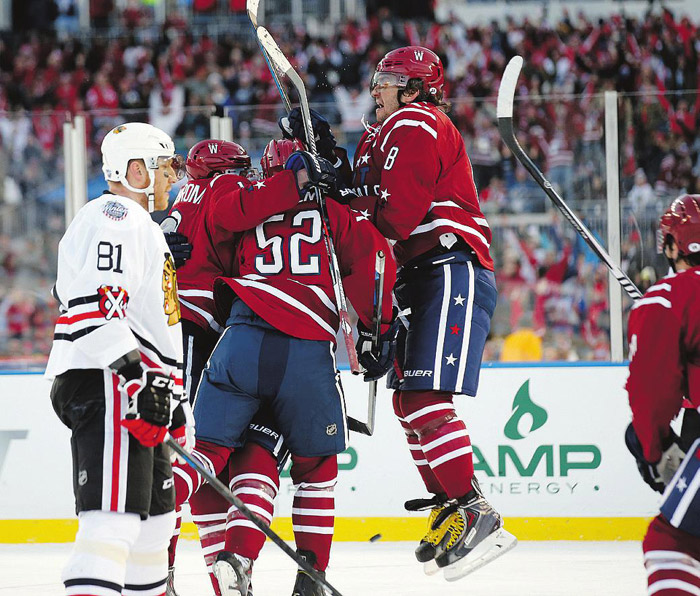As Troy Brouwer scored the game-winning goal with 13 seconds remaining in regulation, one could almost forget that the NHL’s annual Winter Classic was struggling to maintain its popularity among fans. This year’s game, an outdoor tilt between the Washington Capitals and the Chicago Blackhawks, may have been the most exciting one yet—weather conditions were perfect, the ice was as smooth as any indoor rink, and the ending was wild. Nevertheless, it yielded the lowest ratings in the game’s history. This sparked a debate among executives, media, and fans: Why is the Winter Classic losing its appeal?
The NHL hosts three brands of outdoor games: the Heritage Classic, the Winter Classic, and the Stadium Series. While the wide array does offer a variety of entertaining options for fans, one wonders: Has it become too much? An outdoor game every month reduces the unique nature of the event. Fans start to perceive these ‘special’ games as common occurrences and therefore do not worry about missing one, as the next outdoor game is only a few weeks away. Excitement is easily replaced with indifference. If the NHL were to add something unique to each one of these three brands, fans would not feel as though they were being forced to watch different versions of what is essentially the same game in order to pump up league revenues.
Another issue with the Winter Classic is the fact that the same teams keep participating in it. For instance, the Pittsburgh Penguins and the Chicago Blackhawks have participated in two out of the seven Winter Classics each, while strong American hockey markets like the Minnesota Wild and the St. Louis Blues have yet to have their chance at playing in an outdoor game. While the choice of teams often depends on the availability of sporting venues, it is hard for loyal fans not to perceive the scheduling as favouritism of traditional markets. Additionally, recent matchups at the Winter Classic have not featured any juicy narratives. Perhaps pinning two hated rivals, such as the Montreal Canadiens and the Boston Bruins, against each other would result in added game intensity and increase the excitement among fans.
Finally, the biggest issue with the Winter Classic is probably the environment itself. Most of these games take place in baseball stadiums. The crowd is often far removed from the action on the rink, which dampens the mood considerably. Often, the game must be stopped so that the snow can be removed from the ice surface. The ice itself is often not as smooth as one would typically find in an indoor rink, causing the puck to bounce all over the place and making it very hard for players to complete any passes or plays. All of these interruptions take a toll on the players, and ultimately decrease the entertainment value of the game. While fans at the Winter Classic may be enjoying themselves, the experience for those watching the game at home is not nearly as fun.
Ultimately, the Winter Classic should be yielding better ratings than it has. While the NHL cannot control many logistical and weather-related factors, it does have the power to choose meaningful matchups as well as proper venues in order to maximize the entertainment value of the game. Small tweaks to the current state of the great outdoor game will help to increase the popularity of this event and make the Winter Classic a game that fans look forward to each year.








